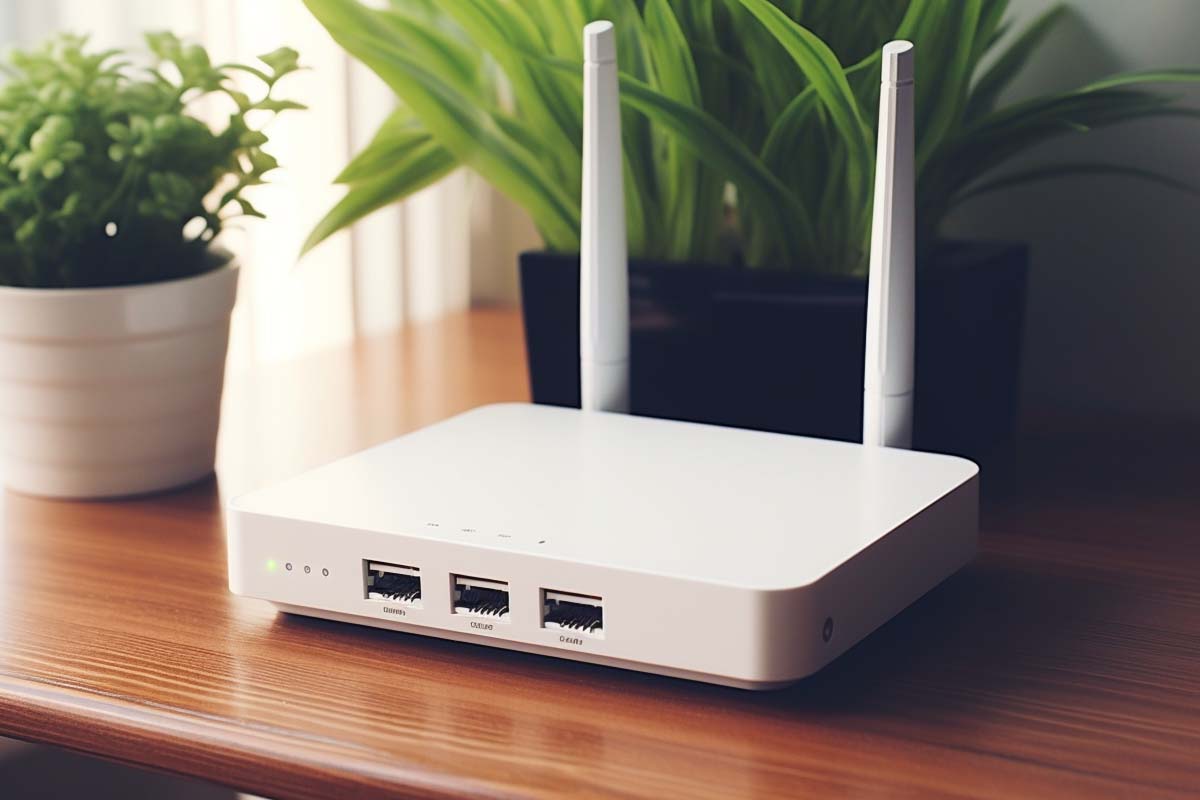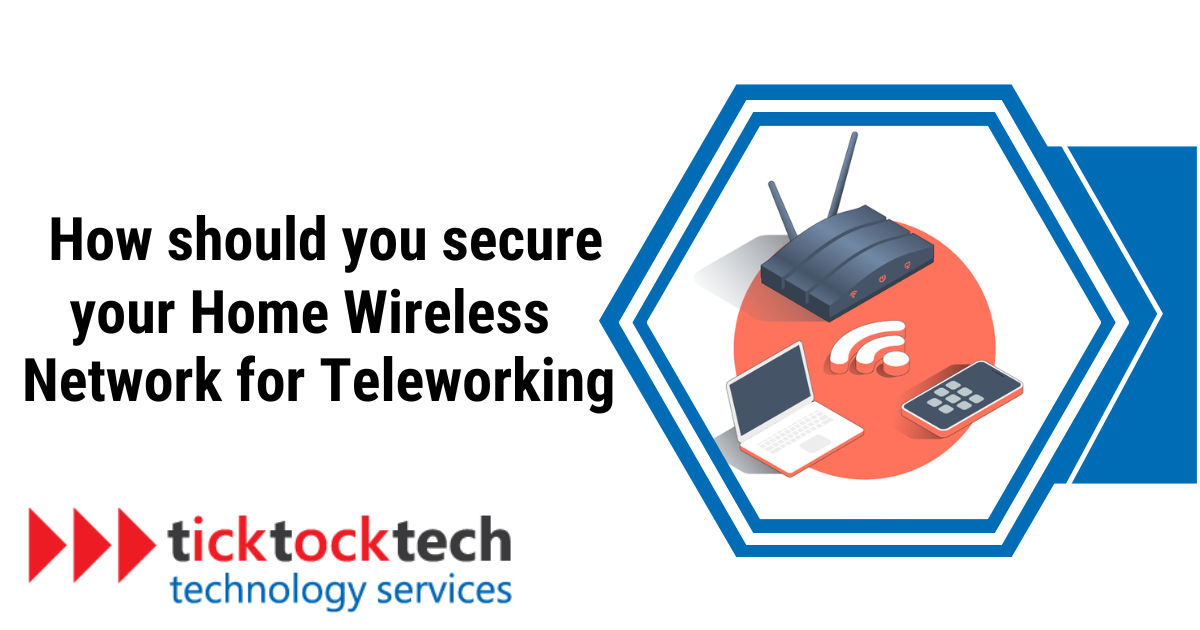To secure your home wireless network for teleworking, change the default network name and password and activate WPA3 encryption. Always keep your router’s firmware updated for maximum security.
Creating a safe home wireless network is crucial for teleworking. Securing your digital workspace begins with basic steps like renaming your Wi-Fi network (SSID) and creating a strong, unique password. This not only deters potential cyber intruders but also makes your network less of an obvious target.
Activating the latest encryption standard, WPA3, ensures that the data passing through your network remains confidential. Consistently updating your router’s firmware patches vulnerabilities and improves performance. Teleworkers must prioritize network security to protect sensitive work data and maintain privacy. By following proper security protocols, you can create a robust barrier against cyber threats.

Credit: www.ituonline.com
Table of Contents
Implement Strong Passwords And Network Encryption
Fortify your home Wi-Fi network for teleworking by creating robust passwords, combining letters, numbers, and symbols. Enable network encryption, choosing WPA3 or WPA2 for maximum security, to safeguard against unauthorized access.
Implement Strong Passwords
Creating robust passwords is a foundational step in securing your home wireless network—especially when your job has shifted to teleworking. You wouldn’t use a flimsy lock on your front door, so why settle for weak passwords on your network? Strong passwords serve as the first line of defense against unauthorized access.
- Complexity is key: Opt for a mix of letters (both uppercase and lowercase), numbers, and symbols. The more complex, the better the security.
- Length matters: Aim for at least 12 characters. Longer passwords are harder for potential intruders to crack.
- Avoid personal information: Never use easily guessable details like your name, address, or birthdate.
- Update regularly: Change your passwords periodically to stay a step ahead of cyber threats.
- Unique for each account: Don’t recycle passwords. If one gets compromised, others could follow.
Embrace Network Encryption
Let’s talk about converting your sensitive data into a code to prevent unauthorized access, or in other words—network encryption. When you’re teleworking, securing the data that travels through your wireless network can’t be overstressed. It’s the digital equivalent of sealing your letters before sending them through the post.
- Use WPA3 if possible: The latest Wi-Fi Protected Access protocol, WPA3, offers enhanced security features. If your router supports it, enable WPA3.
- WPA2 as an alternative: If WPA3 isn’t an option, WPA2 should be your go-to choice. Steer clear of WEP; it’s outdated and easily breached.
- Enable firewalls: Many routers have built-in firewalls. Make sure yours is activated to serve as a barrier between your network and potential attacks.
- Virtual Private Network (VPN): Incorporate a VPN to encrypt all outgoing and incoming traffic. It’s like having a stealth mode for your online communications.
- Regular firmware updates: Keep your router’s firmware up to date to patch vulnerabilities that could be exploited for access.
By intertwining strong passwords with solid network encryption, you create a formidable barrier that shields your home wireless network effectively. The peace of mind that comes with knowing you’ve taken the right steps towards cybersecurity is invaluable when engaging in telework.
Enable Network Firewall And Intrusion Detection/prevention Systems
Securing your home wireless network for teleworking involves multiple steps; enabling a network firewall and intrusion detection/prevention systems is crucial. This strengthens your defense, keeping malicious threats at bay while maintaining a robust, secure connection for remote work tasks.
Enable Network Firewall
Securing your home wireless network is crucial, especially when your job depends on it. Think of a firewall as your first line of defense when it comes to protecting your online space. It essentially works as a barrier between your devices and the potential threats lurking on the internet.
By enabling a network firewall, you:
- Block unauthorized access: This prevents unwanted visitors or malicious software from entering your network.
- Monitor traffic: The firewall oversees incoming and outgoing network traffic, ensuring nothing suspicious slips through.
Regularly updating your firewall’s settings is also essential to maintain a robust defense and address any new types of cyber-attacks that evolve.
Intrusion Detection/prevention Systems
The digital world, sadly, is not all about smooth sailing and upbeat TikToks. It’s peppered with sneaky cyber threats that aim to catch you off guard. Intrusion Detection Systems (IDS) and Intrusion Prevention Systems (IPS) are like having vigilant guardians for your network.
Here’s why they matter:
- Detect potential threats: IDS scrutinizes your network for signs of intrusion, raising the alarm when something’s amiss.
- Forestall security incidents: IPS goes a step further by not just detecting but also preventing identified threats from causing harm.
Incorporating IDS and IPS into your network security plan is a proactive approach to ensure uninterrupted and safe teleworking. Ensuring they’re properly configured and updated can substantially reduce the risk of cyber incidents.
Regularly Update Firmware And Security Patches
Keeping your home wireless network secure during teleworking requires staying vigilant about updates. Ensure the firmware of your router and devices receives the latest security patches to thwart potential cyber threats. Regular maintenance is key to safeguarding your online workspace from unauthorized access.
Ensuring the security of your home wireless network is crucial, especially when teleworking involves sensitive data. One of the most effective ways to keep your network secure is by regularly updating the firmware of your router and applying security patches.
The Importance Of Firmware Updates
Firmware is the software programmed into your router that provides network protocols, security features, and administrative controls. Just as with any software, vulnerabilities can be discovered in firmware that could be exploited by malicious individuals. Updating your firmware can patch these vulnerabilities and enhance the router’s stability:
- Security Enhancement: An updated firmware can patch discovered vulnerabilities, reducing the risk of unauthorized access to your home network.
- Performance Improvements: Besides security, firmware updates can improve the performance of your network by fixing bugs and enhancing features.
- New Features: Manufacturers may add new functionalities to your router through firmware updates, providing you with more advanced options for network management.
How To Apply Security Patches
Applying security patches is just as vital for the devices that connect to your network. Be sure to keep your operating system and any other connected device software current with the latest security updates:
- Regular Checks: Set a schedule to check for updates on all your devices. Many operating systems and applications offer automatic update options.
- Source Verification: Always download patches from the official website or a verified source to avoid malicious software.
- Educate Yourself: Stay informed about the latest security threats and the patches available to mitigate them. Subscribing to tech news feeds can help keep you updated.
Keeping firmware and security software up to date is a fundamental step in securing your home wireless network, particularly when you’re teleworking. It’s a straightforward but powerful practice that safeguards your data and maintains the reliability of your connectivity, so make it a habit.
Utilize Network Segmentation And Guest Network
Securing your home wireless network is crucial for safe teleworking. Implement network segmentation to create distinct areas within your network and establish a separate guest network for visitors, ensuring your main network remains private and protected.
Utilize Network Segmentation
A well-segmented network is not just a boon for large enterprises; it’s equally crucial for securing your home office. By dividing your network into smaller, distinct zones, you can isolate your teleworking devices from other non-essential gadgets.
- Segment your network: By creating a separate subnet for your work-related devices, they remain insulated from household traffic that might carry potential security risks.
- Restrict access: Certain network resources should only be available to devices used for telework, preventing cross-contamination in the event of a breach on less secure home devices.
Set Up A Guest Network
Offering visitors Wi-Fi access shouldn’t compromise your work’s security. The solution lies in a guest network, a common feature in most modern routers.
- Isolate guests: A guest network gives temporary internet access to friends or other devices without granting them entry to your primary network where sensitive work documents reside.
- Control usage: You can set data limits and restrict the time guests can use the network, thus maintaining bandwidth for your work tasks and reinforcing network security.
Building a secure wireless network is a critical step for anyone teleworking. Just like a well-oiled machine, every precaution you take ensures all cogs – devices, data, and personal information – work seamlessly and safely in this digital age.
Implement Additional Security Measures
Elevating your home network’s security is essential, particularly when teleworking. Implementing additional measures like robust encryption and regular firmware updates can shield you against cyber threats. Safeguard your professional data and personal information with these vital steps for a fortified wireless network.
Teleworking has become the new norm for many professionals, and along with it comes the responsibility to secure your home wireless network effectively. It’s crucial to ensure that the connection you rely on for business is as safe as it can be, not just for the sake of corporate data but also for your personal information.
Update Firmware Regularly
Keeping your router updated is the bedrock of network security. Router manufacturers often release firmware updates that address security vulnerabilities and improve performance:
- Security patches: Manufacturers may find and fix security holes within the router’s software.
- Performance enhancements: Updates can lead to more stable connections and better performance.
- New features: Sometimes, updates include new functionalities that can enhance security.
Use A Strong Encryption Method
Modern routers offer several encryption options, and choosing a strong one is vital for Wi-Fi security:
- WPA3 is currently the strongest encryption available, providing the highest level of security.
- WPA2, if WPA3 isn’t an option, ensure that WPA2 with AES encryption is enabled.
- Avoid WEP as it’s outdated and can easily be breached by cybercriminals.
Enable Network Segmentation
Separating your network can help minimize risk if one segment gets compromised:
- Guest network: Enable this feature to provide visitors with internet access, keeping them away from the main network that you use for work.
- Dedicated work network: If possible, create a separate network solely for work-related activities to increase security and reduce distractions.
Restrict Access To Your Network
Your network should be a closed fort, accessible only to authorized users:
- Use a robust password: Create a complex and unique passphrase for your Wi-Fi network.
- MAC address filtering: This allows only known devices to connect, although it requires some maintenance as new devices are added.
Disable Remote Management
Remote access to your router is a potential vulnerability point where hackers can seize control:
- Turning off remote management features means that router settings can only be changed from a device directly connected to your network.
- Check your router settings to ensure remote management is turned off as it’s often enabled by default on some routers.
Implement Firewall And Antivirus Solutions
Protect your network further with software defenses:
- Firewalls: They can be hardware-based or software-based, acting as a shield against unauthorized access.
- Antivirus and anti-malware software: Ensure all devices connected to your network are equipped with up-to-date antivirus solutions to thwart malicious attacks.
By adopting these additional security measures, you’ll create multiple layers of defense for your home wireless network. Remember, as teleworking blurs the lines between our professional and personal lives, securing our digital doorway becomes all the more imperative. With these steps, you can significantly bolster your network’s security and telework with greater peace of mind, keeping both your professional and personal data protected from the myriad of cyber threats lurking in the digital shadows.

Credit: ticktocktech.com
Frequently Asked Questions Of How Should You Secure Your Home Wireless Network For Teleworking
How Did You Secure Your Home Wireless Network For Teleworking?
To secure my home wireless network for teleworking, I changed the default router password, enabled WPA3 encryption, updated firmware, disabled WPS, and used a robust firewall.
How Should You Secure Your Home Wireless Network For Teleworking Cbt?
To secure your home wireless network for teleworking, change the default administrator password, enable WPA3 encryption, disable WPS, hide your network SSID, and regularly update your router’s firmware.
Which Is Considered Ideal For Securing Your Home Wi-fi Network?
To secure your home Wi-Fi, use a strong, unique password, enable WPA3 encryption, change the default network name, update the router firmware regularly, and disable WPS.
What Steps Must Be Taken To Appropriately Secure A Home Network?
To secure your home network, change default passwords, enable WPA3 encryption, update firmware regularly, disable remote access, and use a firewall.
Conclusion
Securing your home wireless network is crucial for efficient teleworking. Embrace strong passwords, update firmware regularly, and employ network encryption. Remember, leveraging VPNs and disabling remote access enhances protection. Take proactive steps today to ensure your cyber safety while working remotely.
Your data’s security is worth the investment.






0 Comments